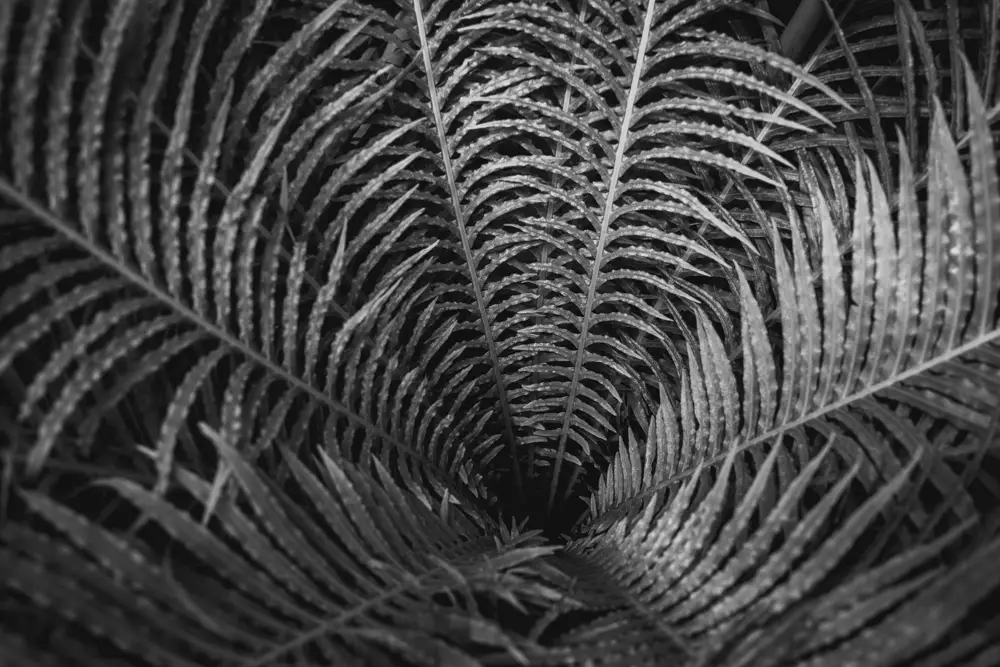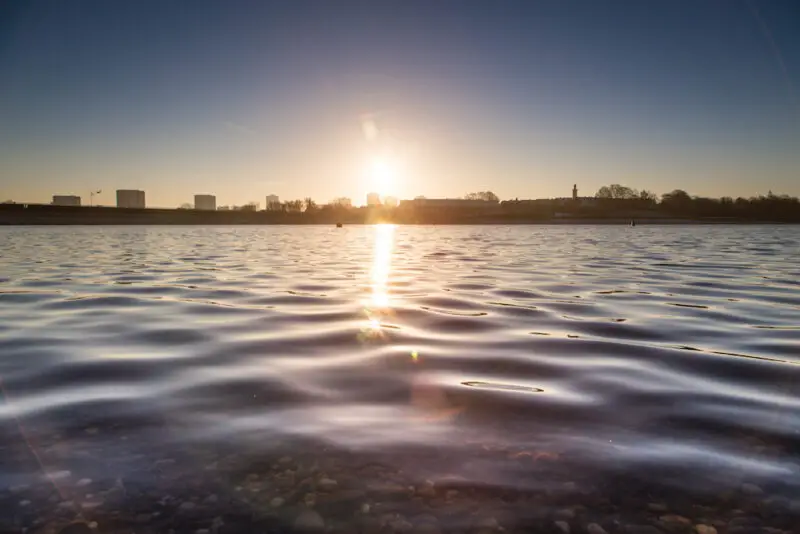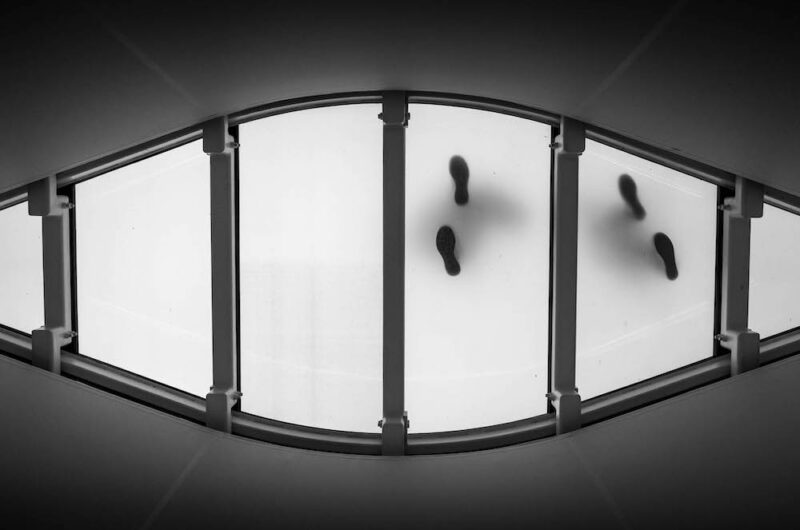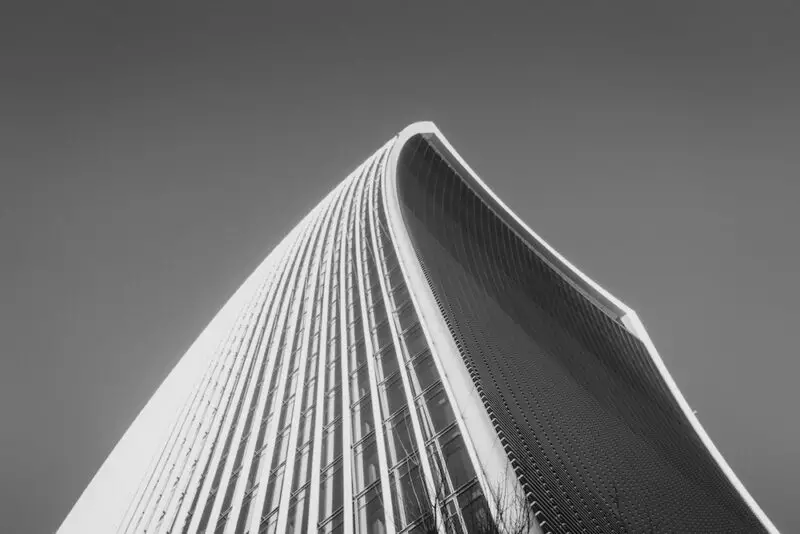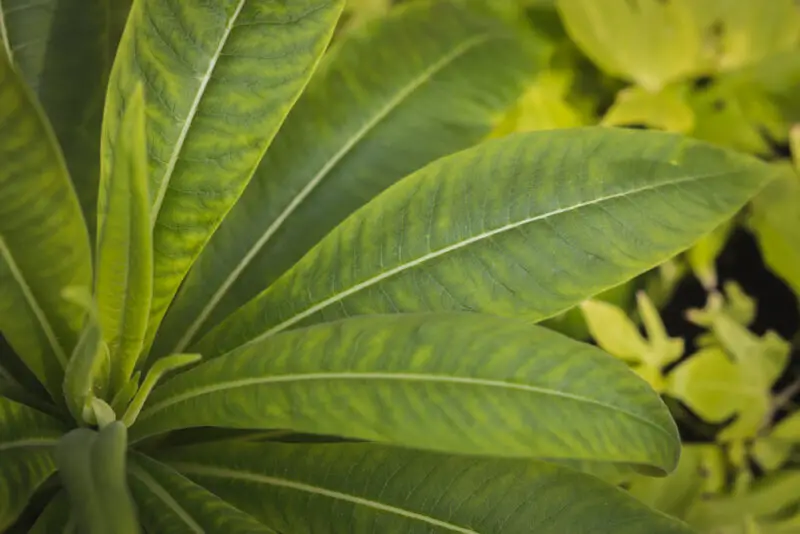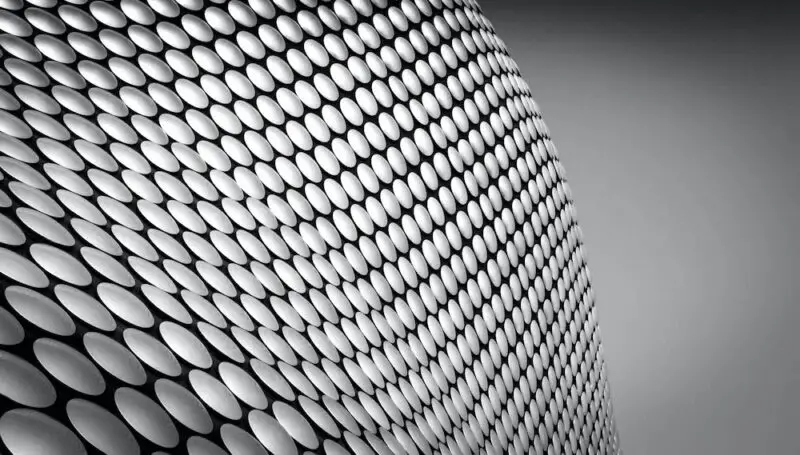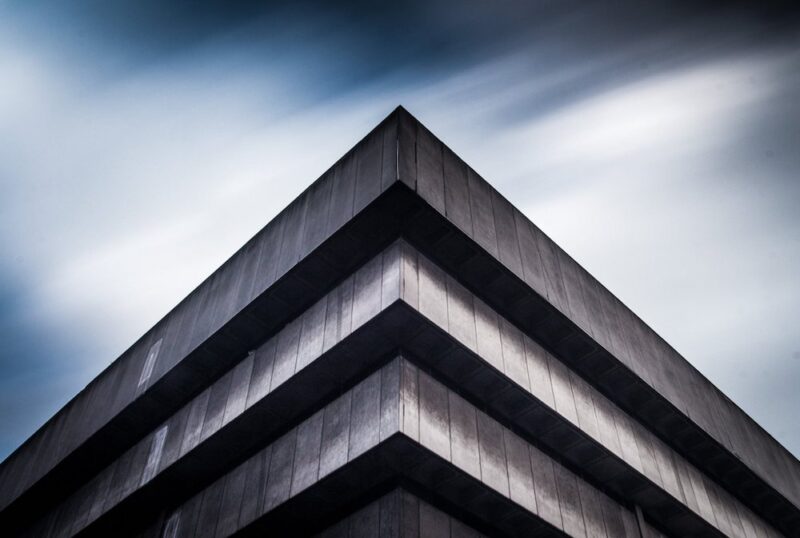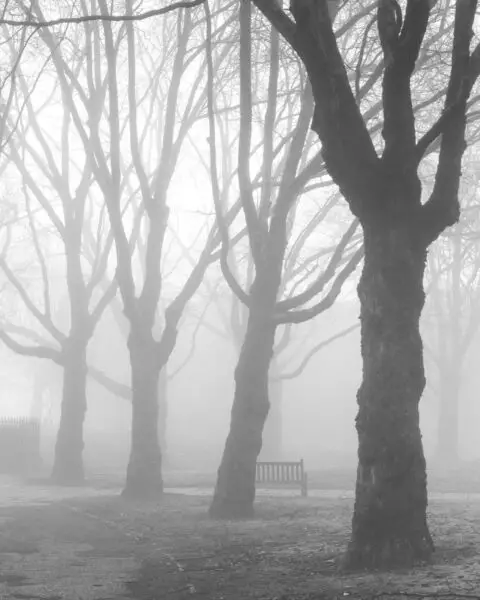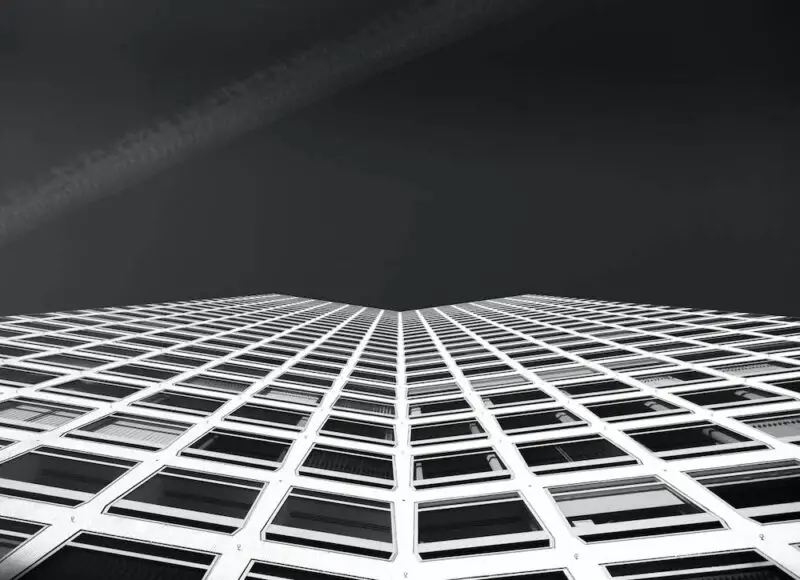07In photography, patterns have a similarly pleasing visual impact as symmetry. Photographers will find patterns everywhere, whether in nature or man-made structures. When a pattern is broken, and tension is introduced in a composition, it can serve as a point of focus quite well. That leads us to pattern photography.
Photographing patterns is something we rarely do, despite their abundance. Everyone tends to photograph familiar subjects such as people, pets, and scenery. Recurring elements are the basis of pattern photography. The repetition of shapes, lines, tones, or colors can create an exciting photograph.
Some photographers use patterns as the main subject of their images, while others use them to enhance the overall composition and look. Using patterns in your work is an excellent compositional technique. In order to understand how effective patterns are to the quality of a photograph, it is necessary to consider the various types of pattern forms.
A pattern also uses symmetry to create eye-catching compositions. By combining both of these elements, you will create eye-catching compositions. Additionally, texture also relates to pattern photography since texture photography uses both color and depth to create patterns. The texture in a photograph plays an important role in how it is perceived.
So, what is a pattern? The basic definition of a pattern is a repeated shape, object, or color. Either in a precise formation or just scattered throughout a scene.
There are a few pattern types you can find:
- Regular Patterns
- Irregular Patterns
- Multiple Patterns
- Breaking the Pattern
Feel free to use our table of contents here to help you navigate:
- Regular Patterns
- Irregular Patterns
- Multiple Patterns
- Breaking The Patterns
- Finding Patterns
- Tips And Techniques
- Final Words
Regular Patterns
You do not have to look for something extremely exclusive in order to use patterns in your photography. Patterns like a brick wall, windows on a building, or even a line of trees are just enough – the simple regular patterns.
The regular patterns are easily recognizable. The images that are created from these easily recognizable patterns are really outstanding, especially when there are a lot of colors involved. In general, regular patterns evoke a feeling of harmony.
You can find regular and symmetrical patterns in flowers, architecture, skyscrapers, and road markings in the streets – for example. They are repetitive. The lines, shapes, geometric designs, and colors repeat themselves. That leads to defining a regular pattern.
Whenever you are taking photos, make sure to try different angles and viewpoints in order to get more interesting shots.
Irregular Patterns
On the other hand, irregular patterns repeat unpredictably, such as ripples in a pool or wrinkles on a crumpled piece of paper. You can usually find things around your house that you can use as subjects for pattern photography ideas, especially irregular patterns.
Unlike the regular patterns, the irregular patterns are not symmetrical. You can find them everywhere too. Be it in nature, architecture, or street photography. Except now, you should look for mountains in nature, graffiti on the streets, or, let’s say cathedrals in architecture.
The irregular patterns usually contain chaotic shapes, lines, and colors. Unlike the feeling of harmony you get from the regular pattern, the irregular patterns invoke feelings of chaos. But, do know you can combine them with regular patterns, with an irregular arrangement.
The repeated placement of objects in a scene, even when they are random, still suggests a sense of repetition. The tree leaves, or the floor of a forest with a carpet of leaves, or walnuts is a pattern. It is random but still a pattern. Or a sky full of parachutists with colored parachutes.
The irregularity of the pattern creates an interesting photograph. Despite not having regular patterns, each is still categorized as a pattern.
Multiple Patterns
Multiple patterns mean that you have both the regular and irregular patterns of objects in one photograph. If you master combining both patterns, you will be able to take astonishing pattern photos. The ability to know these specific elements of photography and concentrate only on them is an interesting experience.
You can find multiple patterns in ancient buildings, for example. They are old buildings that require renovations. When the various additions are made to the old buildings, you will start noticing the multiple patterns. The regular pattern goes in one direction and then changes as the buildings have been renovated and new bricks or tiles have been added thousands of years later.
So, when you are taking a walk, try to find ancient but renovated buildings, so you can use them to enhance your pattern photography.
Breaking The Patterns For Better Pattern Photography
Breaking patterns is a great way to emphasize a pattern. The pattern break should be obvious, otherwise, it will not contribute much to the composition.
For example, if you are in a bookshop looking at the latest release, you will notice one odd book that does not belong there.
Because it’s different, that odd book will catch your eye. Rather than constantly moving over the same books, this gives the eye somewhere to rest and strengthens the pattern’s composition. As a result, the eye is constantly drawn back to the image, adding tension to it.
Or let’s say there is a stack of apples. The odd apple in a display of green apples will attract your attention because it is different from the rest. It makes the photograph more interesting.
You should keep the rule of thirds in mind when breaking the pattern. Additionally, it can be used to create a sense of movement.
Where Can You Find Patterns For Pattern Photography?
You can find patterns in nature, architecture, and the streets, or you can even set up your creative patterns. All you need is a little creativity. So, let’s see where you can find the patterns and how to use them.
Architecture Patterns
The art of architectural photography dates back thousands of years. We are surrounded by architecture – which is why photographers have been photographing buildings and monuments for a long time. So, you can use all of the buildings, cathedrals, monuments, and so on for patterns. Regular or irregular, depending on your needs.
Nature’s Patterns
The creations of Mother Nature are miracles. Whether it is the intricate design of a flower, the intense hue of tropical fish, or the bark pattern of bristlecone pine, each is a work of art in itself.
Flowing lines, swirls, repetitive shapes, rounded or cornered objects, colors, etc., are examples of patterns in nature.
Taking photographs of natural patterns is one of the best outdoor photography projects you can do. As you explore patterns, you will not only get a wealth of photographic possibilities but also gain a better understanding of composition, shape, line, and form, enhancing your ability to become an all-around photographer.
Patterns On The Streets
There are many types of patterns in the streets, including shapes, colors, and objects that are organic or man-made. You can begin by experimenting with man-made patterns, such as brickwork, stairways, car parks, or buildings. You will soon be able to see patterns in the world through your photographic eye, just like you do with texture.
Abstract Pattern Photography
Photographs create abstract patterns by repeating similar shapes without representing specific objects accurately. It is easy to see patterns but not know what they mean. This makes the photographs more interesting.
You Can Find Patterns In Fabrics
Among the many great subjects for pattern photography, fabrics are a great choice because they already have beautiful weaves created by the threads.
The repeating patterns in fabrics might be perfect if you don’t have the focal length to get that close or if you are looking for something with shapes and colors.
Create Your Own Patterns For Better Pattern Photography
Create your own patterns at home to photograph. Take advantage of what you have around at your house and get creative. You can use fallen leaves from your yard, cut out some flower leaves from your garden, use your kid’s lego or use some flower petals.
Tips And Techniques For Better Pattern Photography
The world is full of patterns. It is like having a photographic superpower when you learn to spot them. Identifying patterns in photography will allow you to create striking images with a sense of intrigue. Here are some tips on how to help you master pattern photography.
Use Angles And Compositions
Do you think the pattern is more striking when viewed straight on? Or, which is better, from below or from above? Your ability to see hidden patterns can be enhanced by adjusting your viewpoint.
Using the pattern as a guide, continue to compose once you have found a good angle. It might be a good idea to highlight the perfection of the pattern if it’s even. Separate the pattern from the edge of the image by the same amount.
Use a variety of angles and perspectives when shooting. The abstract patterns you find do not have to resemble objects. Using pattern photography you can create amazing abstract photographs.
You Can Always Use The Light To Create Patterns
Light and shadows are inherent to any photograph. Photographs are made with light, as you know. In the presence of something between the source of light and the surface, a shadow is formed.
A dark shadow with well-defined edges is created if the light hits the object at the same angle. In contrast, if the light is diffused, it will create a soft shadow that blends with the surrounding area.
So, since the repetition of lines or shapes in a design creates a pattern, you can use light and shadows to create patterns. You can use various types of fabrics to make patterns of the shadow, or you can use a grid, fence, windows, blinders, or anything else that has repeated elements.
Using Symmetry For Better Pattern Photography
You will find patterns all over if you try hard enough to look for them, even when you do not look for them that much. Additionally, street photographers tend to recognize patterns in the world around them, but they also seem to break them a bit.
Getting close to the objects is the best way to find out where the patterns are. It is possible to discover patterns that you had never noticed before if you use macro photography.
Whether it is a man-made or natural one, a shape or form can be described as a pattern. There is no better way to discover geometric patterns than by photographing architecture.
If your design has a symmetrical pattern, then you may want to consider ditching the Rule of Thirds. As soon as you center the perfect symmetry, you will be able to see the likeness more clearly.
You Can Use Patterns As Background For Better Pattern Photography
If you feel creative, you can use the patterns as a background. That way, the patterned background complements or contrasts the primary subject and serves as a secondary subject.
Most importantly, never forget to use the composition techniques, so you won’t lose your subject in the pattern.
The Best Way To Photograph Patterns Is To Fill The Frame
As a photo composition technique, “Fill the Frame” refers to placing the main subject of interest in the center of the frame, with the remainder of the frame occupied by the background.
There are many photography techniques that you can use in a composition.
However, this composition technique is the easiest to use as it is easy to remove distracting backgrounds from the picture. As a result, the viewer’s eye is drawn to the details of the subject.
Make sure your digital camera’s zoom feature fills the frame with your subject. If you are using a DSLR camera or a mirrorless camera with a zoom lens, then you should try to use higher focal length lenses for filling the frame when taking photos.
Getting close to the subject is the easiest way to fill the frame. By reducing the distance between you and your subject, you can fill the scene in the camera with a fixed focal length lens like a 35mm or 50mm.
Photographing wildlife or birds has some limitations in terms of getting close. It is possible that the frame will not be filled even after using the longest focal length possible.
To increase the lens focal length in these situations, you can use a lens extender/teleconverter.
If all else fails, you can crop the image so that the subject fills the frame. This happens at the very end of the photography process, during post-processing. If you use Lightroom or another image editing program, you can crop the image.
Cropped images with good details depend on two factors. In the first place, the subject should occupy a large portion of the frame. It is also important to capture the image in a good resolution. This is where the megapixel resolution of the camera comes into play.
You Can Use Patterns In Landscape Photography
You can use it to find large-scale patterns, such as a pattern of trees on the horizon or mountains in the distance. However, you can also look for small patterns within the scene, especially if you are looking for more intimate landscape shots.
Use Patterns In Portrait Photography
There are lots of ways to use patterns in portrait photography. For example, make sure that several subjects pose in the same manner. Or you can place one subject behind the next to create an “echoed” pattern.
The important thing to keep in mind is that you do not have to limit yourself to patterns made up of shapes – you can also use patterns that are derived from colors. You can try and position the subjects to create a pattern.
There are many possibilities when it comes to positioning subjects. As an example, you can place a subject clad in blue in front of a blue backdrop, a subject dressed in yellow in front of a yellow backdrop, and so forth. Taking a shot like this can make for an incredibly harmonious shot.
Create More Patterns By Combining Them
It is very difficult to find combinations of patterns that work together. This especially happens if they contrast or complement each other strongly.
Colors should complement one another in the pattern, as well as shapes, the linear direction, and the scale of the pattern, as well as their relation to one another.
Put The Colors To Use For Better Pattern Photography
One of the best subjects you can use in your photography is a pattern that you can create by combining colors. With this method, you can create abstract patterns.
However, it is also possible to use color in an effort to create or highlight a pattern of different shapes and forms. There are people wearing the same color clothing, for example.
You can also find symmetry and patterns of color in mosaics and stained glass windows in historical churches, as well as in other places such as historical art museums.
There are a lot of colorful patterns that you can find in nature photography, including patterns on flowers and animals. That is if you like nature photography.
How Patterns And Negative Space Work Together
Now that you know some common patterns, you may consider using them in your own photos. Do you wonder how you can incorporate patterns into your compositions? What is the best way to position them in relation to the other frame elements?
You must recognize whether your pattern creates positive space or negative space as part of your compositional process. Negative space feels atmospheric and light, while positive space feels heavy. The pattern you are working with, as well as the general composition being used, can make up either positive or negative space.
If you zoom out, you can use patterns to create negative space so that the pattern groups together and creates a nice wash. As you get close to a pattern and focus on its details you can create positive space. Negative space tends to fade away while positive space is clearly defined.
Patterns that form positive space should be either the main subject or the supporting subject. Alternatively, they should lead the eye to the subject.
Identify the pattern as the main subject, and then position it using the rule of thirds, golden ratio, or another guideline for subject positioning if it is the dominant part of the scene.
Try to position the pattern in such a way that it leads the eye in that direction or acts as a second point of interest within the composition if it isn’t the dominant part of the scene.
Consider Using Special Effects Filters
Pattern photography can also benefit from special effects filters. It is possible to create repetitive patterns using some of these filters. The filters are really easy to use. All you have to do is screw them to your lens.
One example is the multi-vision filter, which is made up of two pieces you rotate to create the effect. It allows you to multiply your subject six times. Also, you can combine different light sources with cross-star filters to create star-shaped patterns for pattern photography.
You Can Use Patterns In Macro Photography
If you choose macro photography, you will have more opportunities to work with patterned elements. There are many patterns in flowers, for example, you can create patterns by using flower petals. You can also use the center of the flower, the sunflower for example has a lot of seeds in the center that create a pattern.
Tree bark, for instance, has patterns you’d never notice otherwise if you magnify it. So, you should use a macro lens if possible, or you can try using an extension tube or close-up filter if you don’t have a macro lens.
When we are talking about macro, never forget that the insects offer one of the greatest patterns ever. Take the wings of the butterfly for example.
Final Words About Pattern Photography
So, as you already know, patterns come in different shapes, and you can find them everywhere. This applies to both natural and man-made objects. If you use your imagination and creativity, you may even be able to come up with your own patterns.
Sometimes your friends and close ones do not like to be photographed, and when your family dog runs away the moment you pick up your camera. So, that is the time you should try to take photographs of patterns instead of people.
Rather than using patterns as components of a composition, photograph patterns on their own. It can be challenging to find the patterns, but it is not that hard. Truth be told, that is the fun part of pattern photography. When you find out how great the result is and how good the pattern looks in the photos, you will never stop using patterns.
Also, pattern photography is fun for brand-new photographers. All you need to do is pay attention to the details, even when you are not photographing. When walking on the street, riding the bus or your bike, for example. That is how you can usually find interesting patterns.
You can also try shooting from different angles and see if you can fill the frame with the pattern of your choice. By practicing with different patterns, such as those found in nature or objects, you can learn to recognize the patterns easier.
